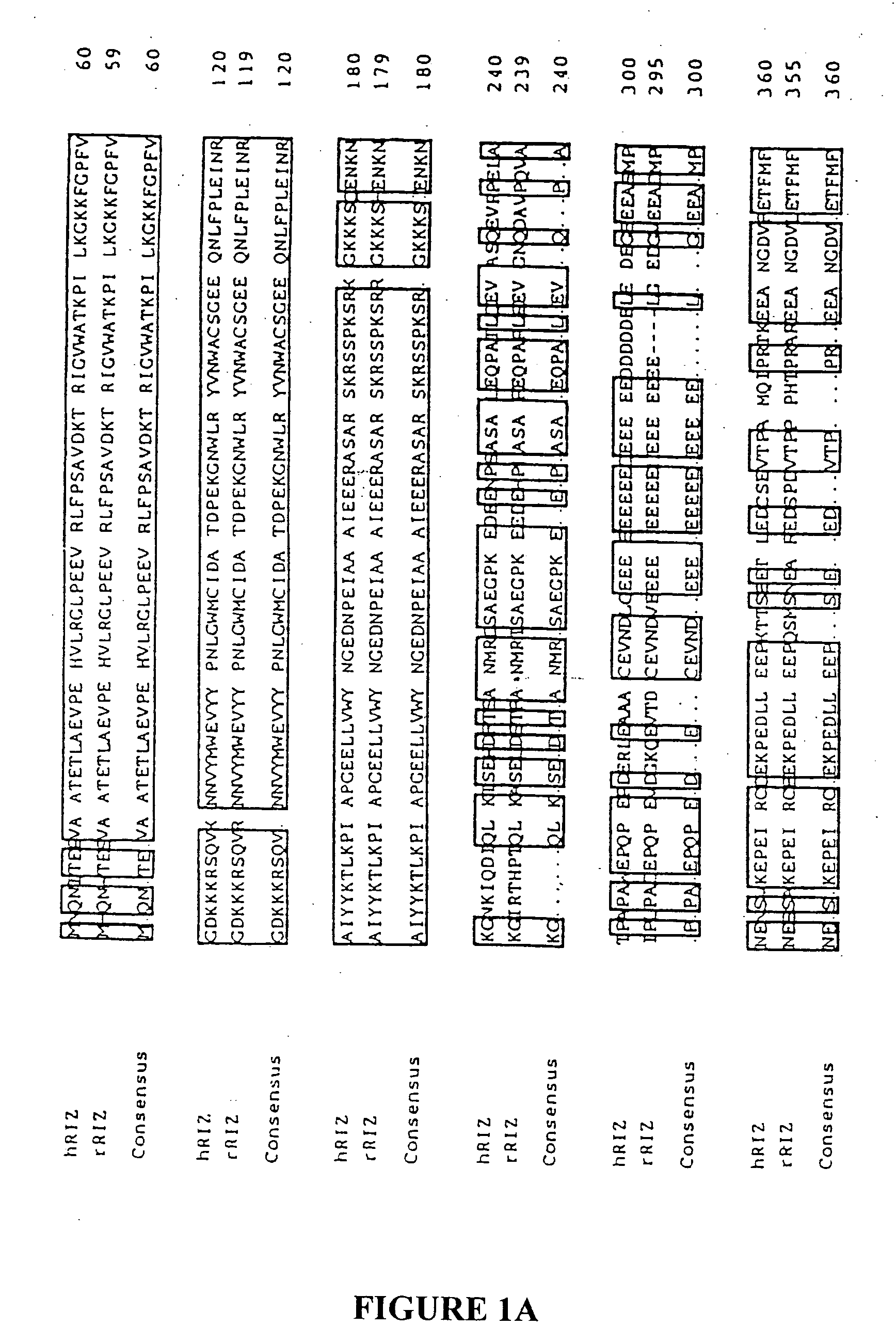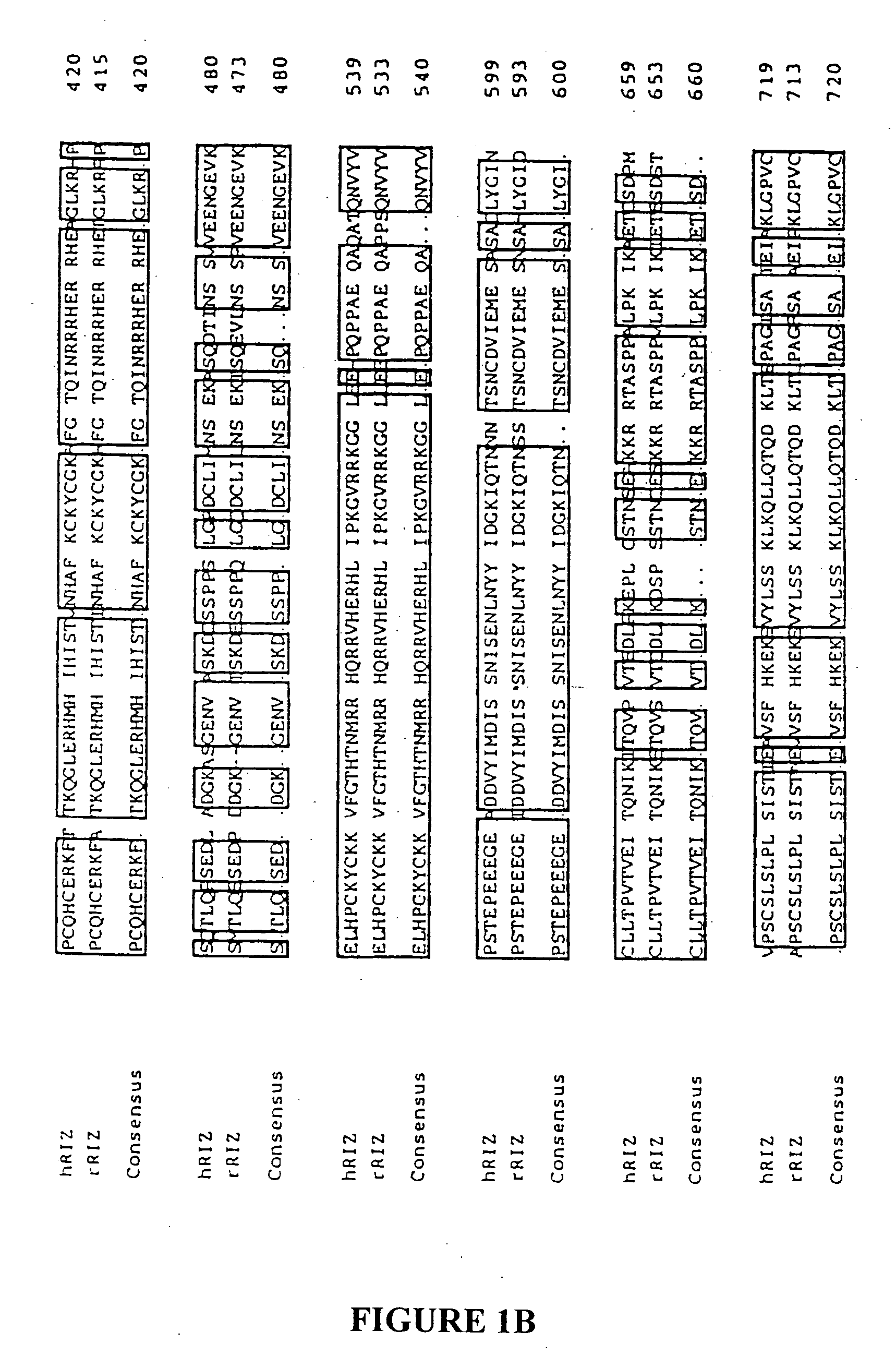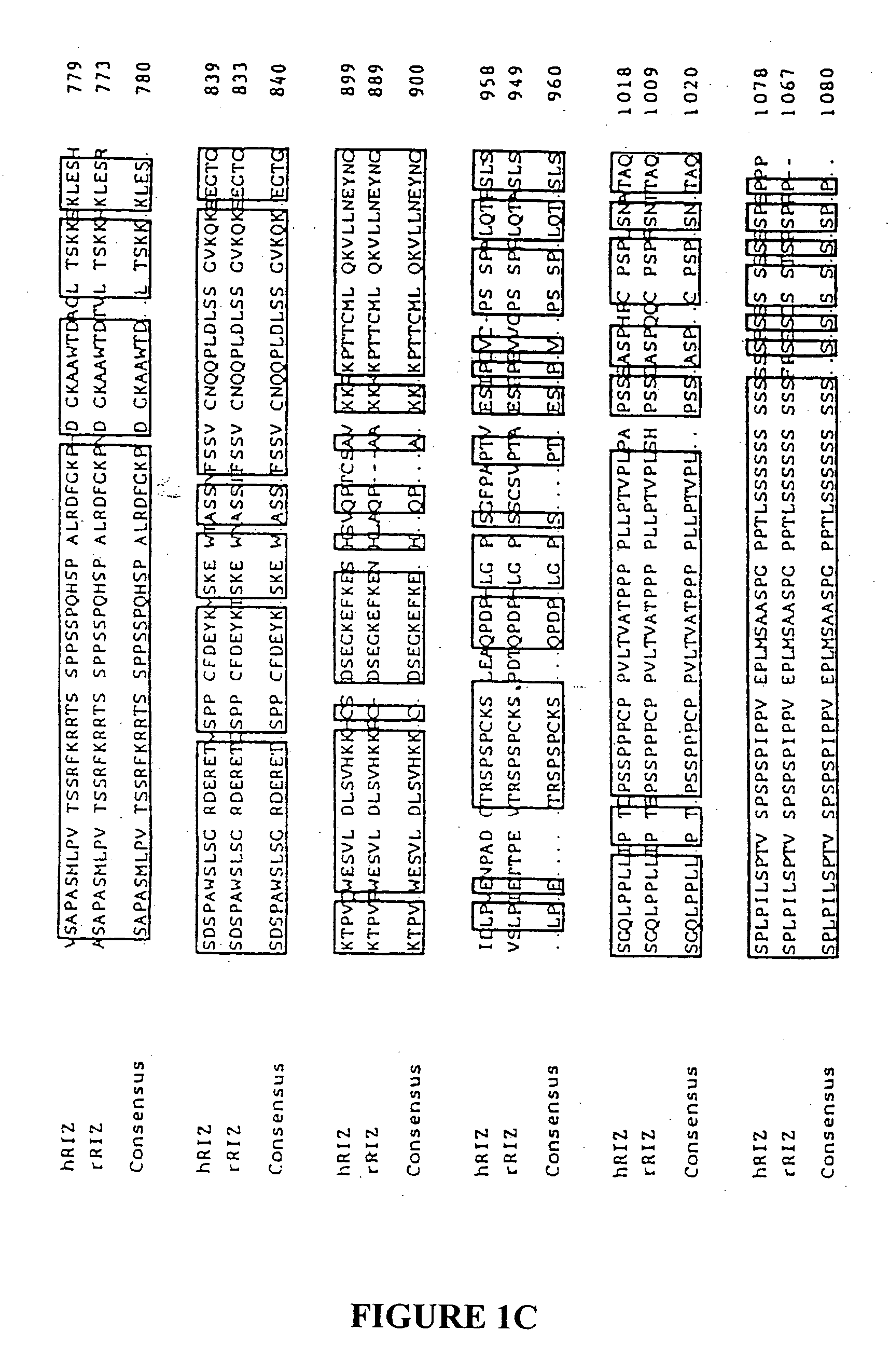Methods of detecting and treating microsatellite-instability positive tumors using RIZ
a technology of riz and tumors, applied in the field of cancer, can solve the problems of riz1 expression in tumors in vivo, cell dna mismatch repair system, microsatellite instability, etc., and achieve the effect of inhibiting tumor growth and inhibiting the growth of riz1-positive tumors
- Summary
- Abstract
- Description
- Claims
- Application Information
AI Technical Summary
Benefits of technology
Problems solved by technology
Method used
Image
Examples
example i
RIZ Mutations in MSI(+) Tumors, and Effect of Ectopic Expression of RIZ in MSI(+) Tumors
[0056] This example shows that RIZ poly(A)-tract frameshift mutations are present in a high percentage of MSI(+) tumor cells of a variety of different cell types. This example also shows that expression of a nucleic acid molecule encoding functional RIZ in an MSI(+) tumor cell containing a RIZ-poly(A)-tract frameshift mutation induces cell cycle arrest and apoptosis of the tumor cells.
Materials and Methods
[0057] Tissue Samples and Cell Lines. 22 MSI(−) tumors were studied. 8 of these were selected because they previously had been found to display a CIN (chromosomal instability) phenotype, including LOH at two closely linked markers, D1S228 [32.4 centimorgans (cM)] and D1S507 (36.2 cM) (Canzian et al., Cancer Res. 56:3331-3337 (1996)). In 14 tumors, the LOH status at 1p was unknown. Additionally, 3 MSI(−) lines were obtained from the American Type Culture Collection (ATCC). The MSI(−) lines we...
example ii
RIZ Poly(A)-Tract Frameshift Mutations in MSI(+) Gastric Cancers
[0076] This example shows that RIZ poly(A)-tract frameshift mutations occur with high frequency in MSI(+) gastric cancers.
[0077] To examine the role of RIZ in MSI(+) tumors, a total of 179 primary gastrointestinal and endometrial tumors from patients undergoing surgery were analyzed. Among them, 109 tumors were characterized as MSI-High, including 40 gastric carcinomas (K), 18 endometrial cancers (E or AN), and 51 colorectal cancers (AC, IC or AS). MSI-High status in primary tumors was defined according to the criteria proposed by Boland et al., supra (1998). The source of tumor samples is described in Kong et al., Nat. Genet. 17:143-144 (1997); Yamamoto et al., Cancer Res. 57:4420-4426 (.1997); and Kim et al., Lab. Investig. 79:1113-1120 (1999). A panel of MSI(+) cell lines derived from colon (HCTl16, SW-48, LOVO, LS44lN, LSl80, LSl74T, DLDl, HCTl5, HCT8), prostate (DUl45), breast (Cal-51), and uterus (AN3CA, SK-UT-1...
example iii
RIZ1 Expression Inhibits Growth of MSI(+) Tumors
[0086] This examples shows that RIZ1 expression inhibits growth of MSI(+) tumors and induces apoptosis of tumor cells in vivo.
[0087] To determine the efficacy of RIZl in gene therapy of MSI(+) tumors, the effect of expression of recombinant RIZl in inhibiting growth of established solid tumors was determined. As a control, the effect of recombinant p53 expression was also assessed.
[0088] The MSI(+) HCT116 colorectal cancer cell line (obtained from American Type Culture Collection), which carries homozygously mutated RIZl and wild type p53, was cultured in Dulbecco's modified Eagle's medium with 10% fetal calf serum.
[0089] Athymic female nu / nu (nude) mice were obtained from Jackson Laboratories-(Bar Harbor, Me.). HCT116 tumor cells (2×106 cells in 100 μl PBS / mouse) were injected subcutaneously into nude mice. Tumors were allowed to grow in vivo for 6 days, at which time they reached an average size of 0.5 cm in diameter. Prior to th...
PUM
| Property | Measurement | Unit |
|---|---|---|
| pH | aaaaa | aaaaa |
| volumes | aaaaa | aaaaa |
| volumes | aaaaa | aaaaa |
Abstract
Description
Claims
Application Information
 Login to View More
Login to View More - R&D
- Intellectual Property
- Life Sciences
- Materials
- Tech Scout
- Unparalleled Data Quality
- Higher Quality Content
- 60% Fewer Hallucinations
Browse by: Latest US Patents, China's latest patents, Technical Efficacy Thesaurus, Application Domain, Technology Topic, Popular Technical Reports.
© 2025 PatSnap. All rights reserved.Legal|Privacy policy|Modern Slavery Act Transparency Statement|Sitemap|About US| Contact US: help@patsnap.com



